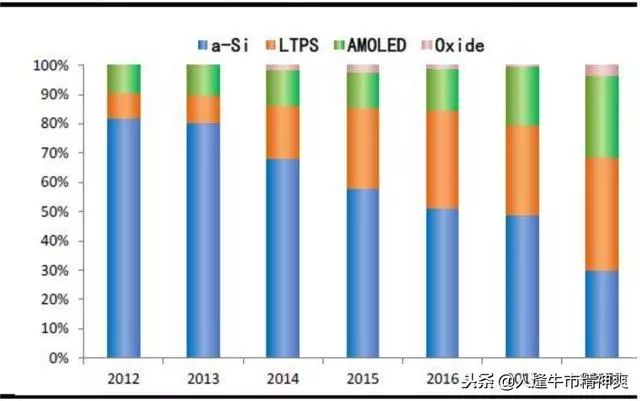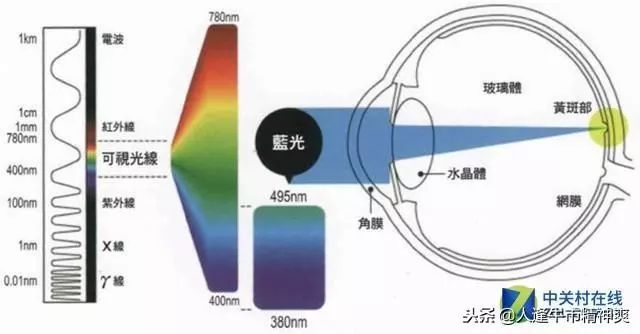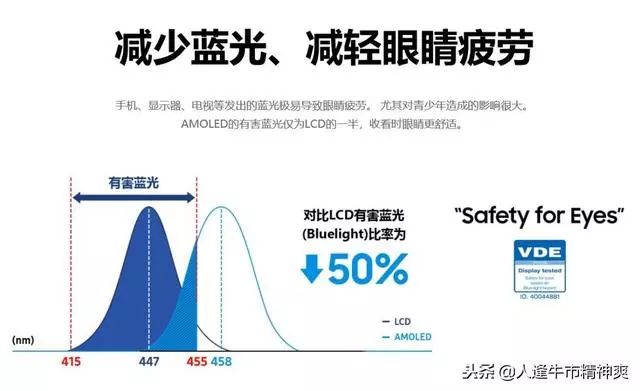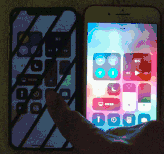
The market is seeing an increasing number of smartphones with OLED screens, especially since the iPhone X adopted Samsung’s AMOLED (a branch of OLED). It seems that if flagship phones do not use OLED, they are not considered true flagships. Previously, only Samsung had mass-produced OLED screens for smartphones (Xiaomi NOTE2 used LG’s OLED, which did not perform well, affecting its sales, resulting in the spokesperson Tony Leung being blamed for it). This year, Huawei’s MATE 20 Pro using BOE’s OLED screen finally broke this monopoly (the MATE 20 Pro also used LG’s OLED, once again proving that LG is still a poor teammate, causing issues for Huawei).
The advantages of OLED are clear: it is flexible, more energy-efficient than LCD, thinner, has higher color saturation, and faster response times.
While the market has chosen OLED, many online criticize OLED screens as “eye-harming screens,” and doubts about OLED’s harm to vision are endless. So, can we choose smartphones with OLED screens?
In fact, the main culprits of eye harm from smartphone screens are blue light and screen flicker.

The Harm of Blue Light
Blue light refers to visible light with wavelengths between 380nm and 495nm. Blue light has the highest energy and strong penetration among visible light. After passing through the pupil and the lens, blue light reaches the macula in the retina, which can cause macular degeneration, resulting in irreversible damage. Simultaneously, some blue light passing through the pupil is absorbed by the lens, causing it to become cloudy.

Samsung’s Promotion
Both LCD and OLED inevitably produce blue light, but the wavelength of blue light produced by LCD is shorter than that of OLED, posing a greater danger to the human eye. This is because shorter wavelengths carry more energy and have stronger penetration. Therefore, blue light with a wavelength less than 455nm is defined as harmful blue light. The peak wavelength of blue light for LCD is 447nm, which falls into the harmful range, while OLED’s peak wavelength is 458nm, indicating it is less harmful to the eyes. According to Samsung’s own promotion, OLED reduces harmful blue light by 50% compared to LCD.
Now that we understand the principles, let’s discuss how to avoid blue light damage to the eyes. First, we should avoid using smartphones or computers in dark environments because the pupils will dilate in dark settings, increasing the amount of light entering the eyes, including blue light. We can also wear blue light-blocking glasses or apply blue light filters to mitigate some of the blue light’s harm to our eyes. Additionally, we can switch our phones to eye-care mode to reduce screen blue light.
Screen flicker, like visible light, only causes discomfort at specific flicker frequency ranges. Let’s first look at how LCD and OLED flicker differently. Both LCD and OLED experience flicker, but LCD uses DC dimming, while OLED uses PWM dimming. In simple terms, the two types of screens adjust their brightness through different control methods.
Currently, there is no unified standard for flicker frequency in both domestic and international contexts. We can refer to the standard for LED eye-care lamps in China, which states that a flicker frequency above 3125Hz can be considered flicker-free. This means that when the flicker frequency is at 3125Hz, the damage to the human eye can be ignored. However, many believe this standard is too high because even a flicker frequency of 100Hz may go unnoticed by many. The IEEE (Institute of Electrical and Electronics Engineers) has stated that LED flicker may lead to migraines and other health issues, suggesting a low health risk flicker range of above 1250Hz. However, even this standard is still heavily debated within the industry, and the medical community has yet to provide a clear answer.

PWM Dimming Principle
LCD screens, due to using DC dimming, maintain a high flicker frequency during bright changes, typically above 2000Hz, making their harm to the human eye negligible. However, OLED screens, due to their different dimming methods, have a fast flicker frequency at high brightness and a slower flicker frequency at low brightness. Currently, the top OLED screens used in smartphones are in the iPhone X and Samsung S9, with their maximum flicker frequency only reaching 240Hz, far below the safe value of 1250Hz, not to mention other phones.

OLED Flicker
So what harm does flicker cause to people? The primary harm of flicker is a decline in vision, leading to fatigue, and prolonged use of screens with low flicker frequencies can even cause nausea, headaches, and eye strain. Sensitive individuals may even experience photosensitive epilepsy, where exposure to visible light modulation within the 3-70Hz range can trigger seizures even after short-term contact. This affects about 1 in 4000 individuals aged 5-24, typically starting during puberty, with 75% of them remaining sensitive to light for life.
Some may wonder why OLED does not use DC dimming like LCD, given the significant impact of low flicker frequency. Samsung’s earlier OLED products used DC dimming, but due to uneven color, they were humorously labeled “rag screens,” leading to a compromise on PWM dimming instead.
How can we prevent flicker from harming our eyes? Currently, there are no good methods; the only advice is to avoid using OLED screens in dark environments and to keep the screen brightness above 60% when using OLED devices.
In summary, both LCD’s blue light and OLED’s flicker can harm the eyes. So which one should we choose? I believe if you are not a sensitive person, you can choose OLED, because prolonged use of OLED with flicker can cause discomfort and visual fatigue, prompting you to reduce electronic device usage. In contrast, while you may not feel discomfort using LCD, it can cause invisible damage to your eyes through blue light, leading to irreversible damage to the macula, a key component of the retina.
This is the 539th article published by China Optics. The editor works hard every day to gather and organize various content to better serve everyone. If you find it interesting, please give it a like! Sharing it with your friends can also make our efforts feel worthwhile.
Learning is a belief, sharing is a virtue!

Long press the QR code to follow us, and you won’t miss the stunning light in the colorful world!
☞ Edited by: Xiong Yan
☞ Source: Today’s Headlines
☞ Recommended by: Zhang Guang
Disclaimer: If any videos, images, or text in this article involve copyright issues, please notify us immediately. We will confirm the copyright based on the materials you provide and pay remuneration according to national standards or delete it immediately.